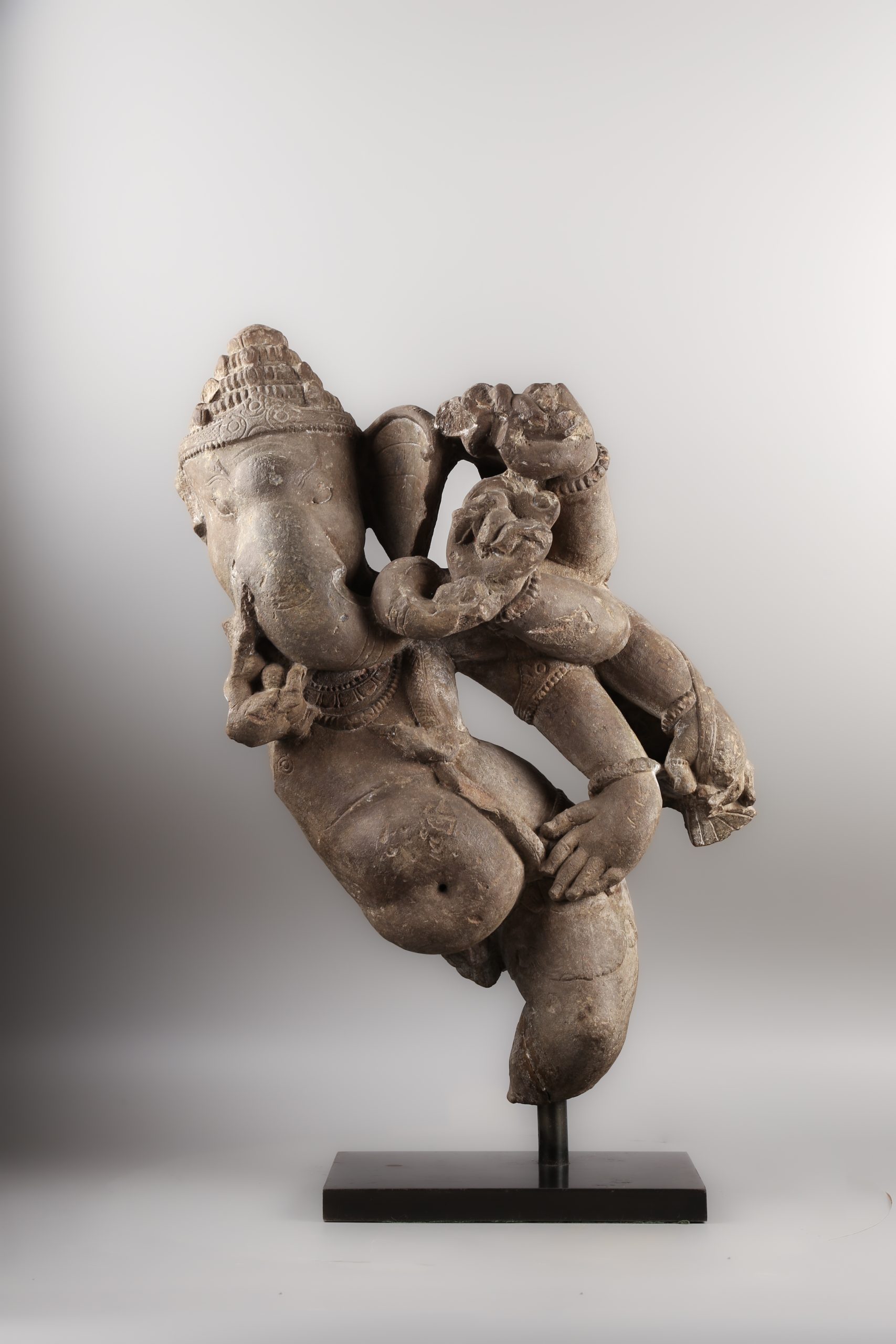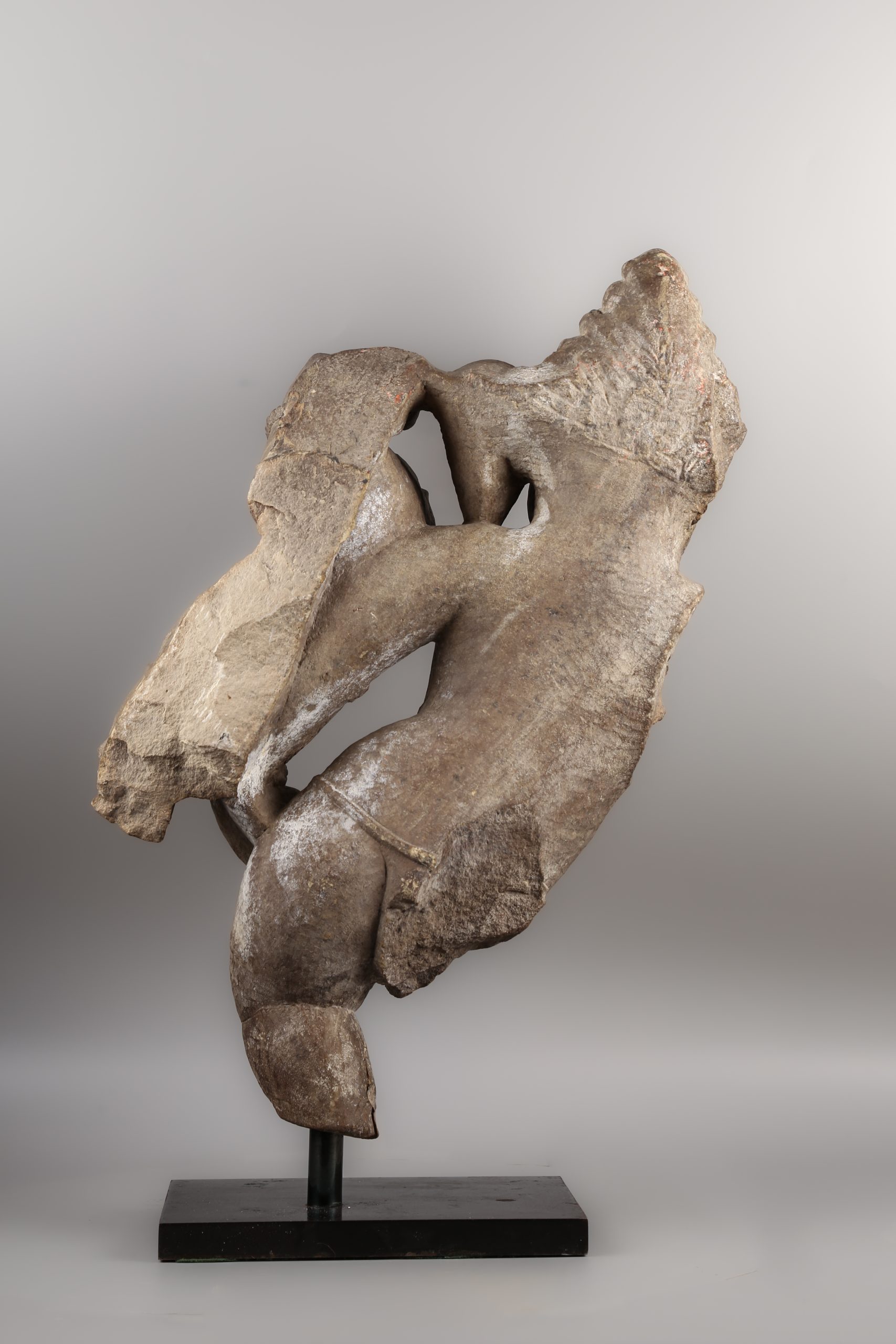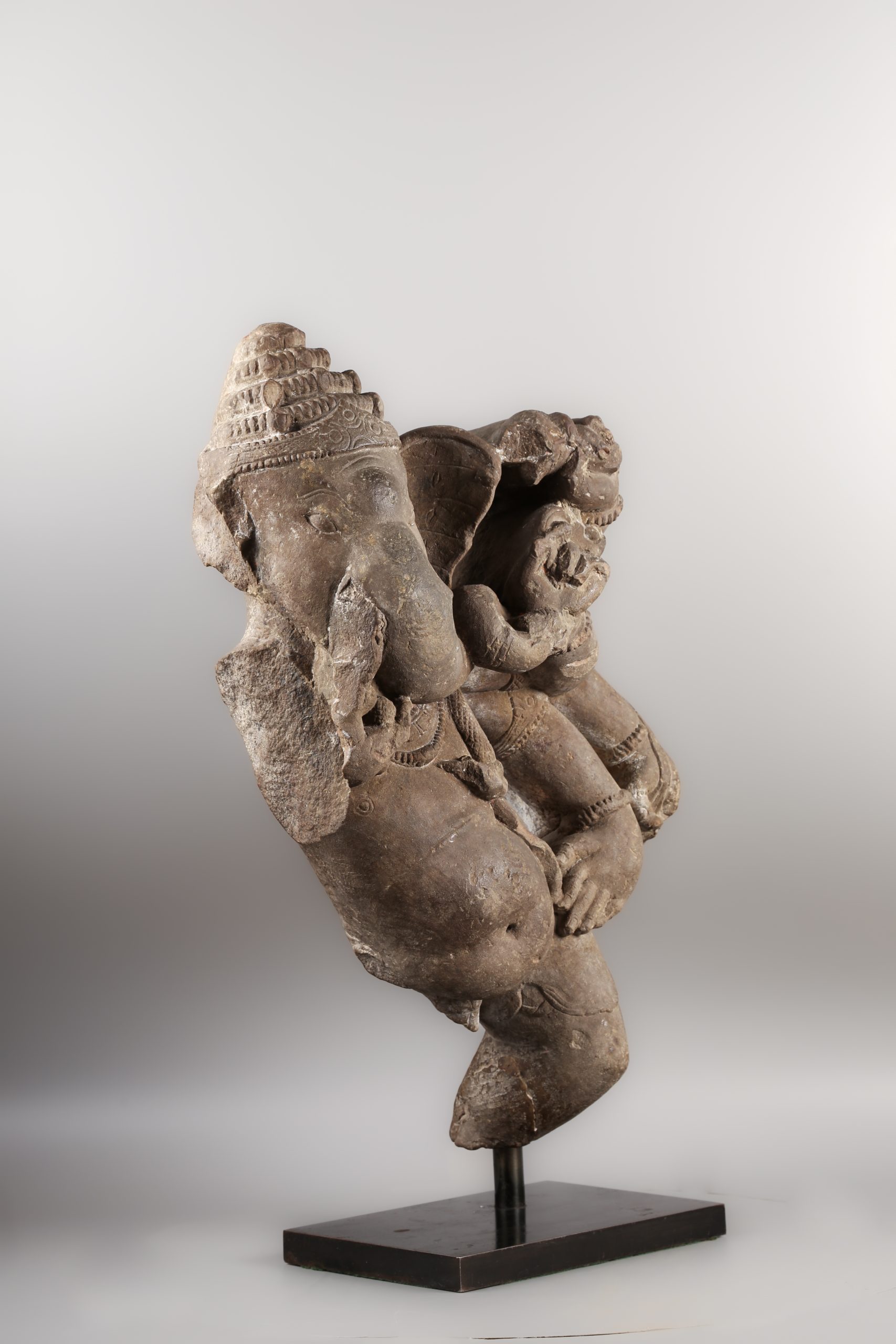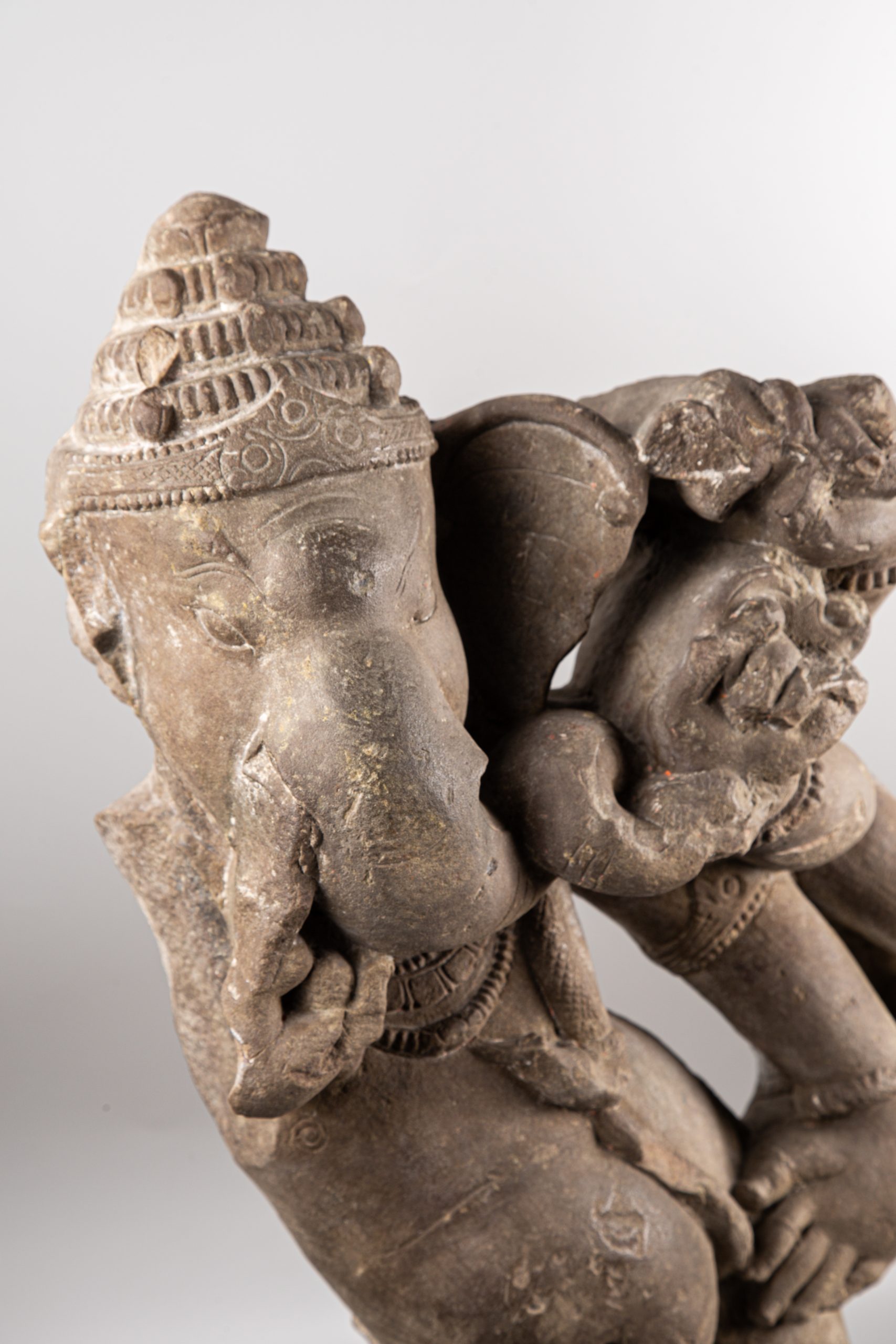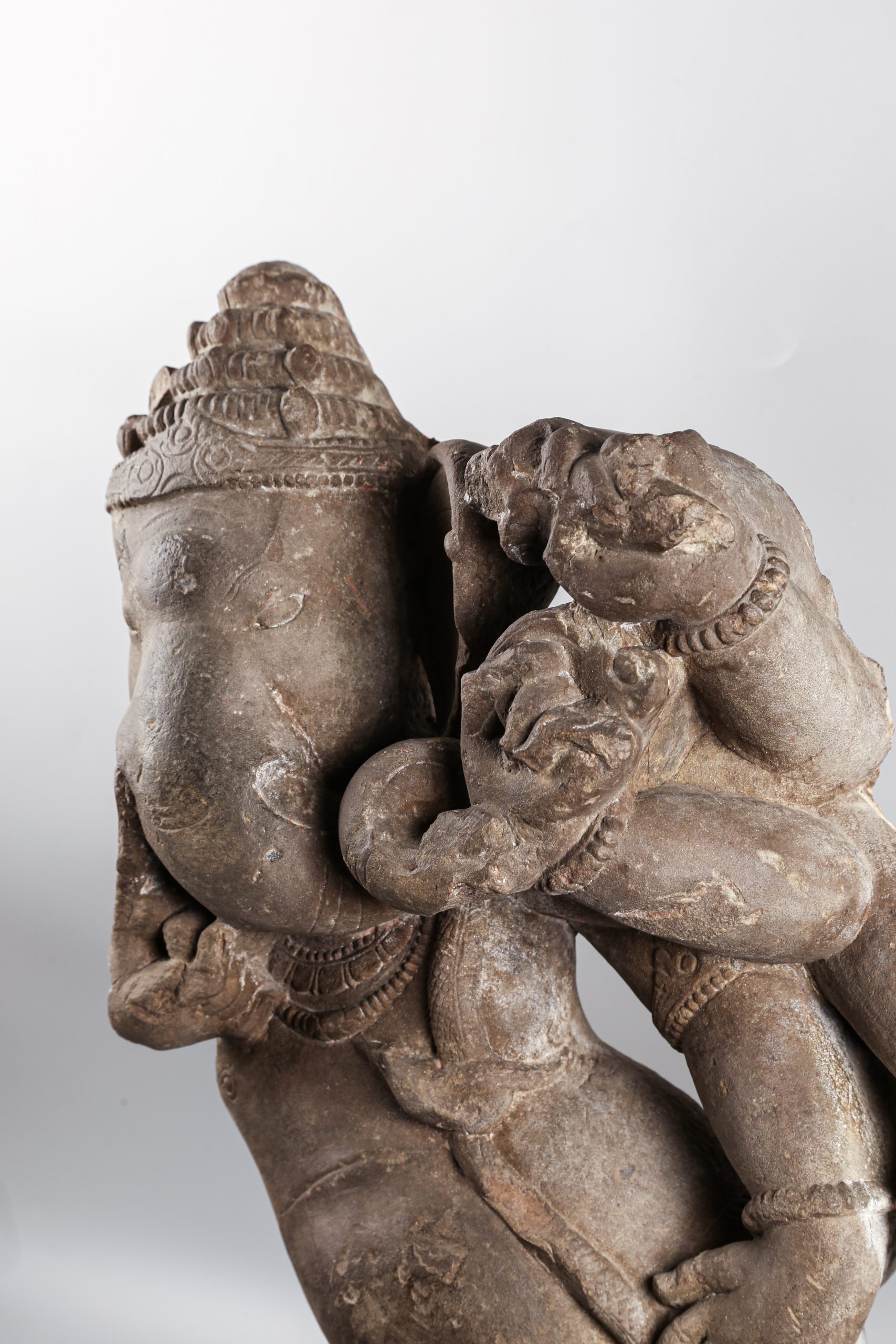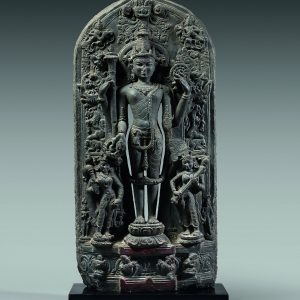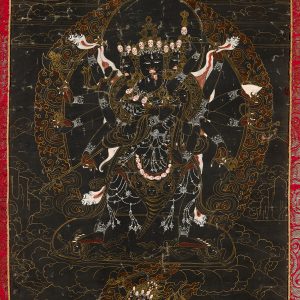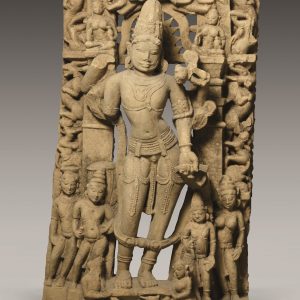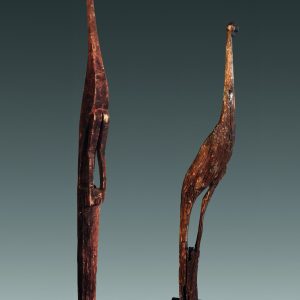Dancing Gaṇeśa
Sandstone
South India, Madura region
12th century
H. 58 cm
Description
This work represents the god Ganesh, finely sculpted in a graceful dancing pose. On his left side, we can see his four arms and two of his hands. One of them delicately holds the hem of his garment, the other supporting his tusk which appears to be broken. His elegantly drawn trunk is rolled up on itself and also extends towards the left side of the deity.
The son of Śiva and Pārvatī, this elephant-headed god enjoys great popular fervour, and is venerated in the various streams of Hinduism. He is the one who removes obstacles and contributes to the prosperity of any enterprise. A greedy god, his devotees honour him with offerings, particularly sweets, which are placed at the foot of the god’s statues.
His fine face is also to be noted, his refined eyes are chiseled in the shape of an almond, as is often the case according to the canons of the time. The eyes are overhung by arched eyebrows and very clearly engraved. Finally, a crown with elaborate and very harmonious motifs is placed on top of his head.
Provenance: German private collection established in the 1980s.

